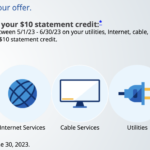Ways to Spend Your Money Before Student Loan Payments Restart
Government Measures and Resistance: What’s Next for Student Loan Borrowers?
Government measures to help relieve financial pressures on student loan borrowers have faced resistance from lawmakers and private parties, leading to uncertainty for those with student loan debt. The U.S. Department of Education, in collaboration with the federal government, implemented emergency forbearance for eligible federal student loans due to the COVID-19 pandemic. However, the Biden administration’s proposal for payment suspensions, 0% interest, collection activity cessation, and loan forgiveness of up to $20,000 faced legal challenges.
The original forbearance period, which began in March 2020, was extended multiple times before the Biden administration’s proposal in August 2022. However, federal courts blocked the student loan forgiveness plan, resulting in a hold on all payments until the Supreme Court resolved the issue or 60 days after the final extension of forbearance on June 30, 2023. The Supreme Court ultimately ruled against the administration’s authority to cancel student loan debt, leading to the introduction of the Saving on a Valuable Education (SAVE) plan.
The SAVE plan aimed to reduce student loan payments for borrowers, but it faced legal challenges and was blocked by a federal court in July 2024. In the meantime, borrowers enrolled in the SAVE plan have been placed in forbearance, where they are not required to make payments and interest does not accrue on their loans.
For individuals with student loan debt, options exist to utilize any extra cash saved during the forbearance period. These options include paying off high-interest debt, saving up to pay federal student loans, paying off private student loans, and building an emergency fund. By strategically managing their finances during this uncertain period, borrowers can make progress in other areas of their financial lives and prepare for the eventual return of federal student loan payments.



:max_bytes(150000):strip_icc()/Male-College-Student-56a52ec43df78cf77286be2f.jpg?w=150&resize=150,150&ssl=1)